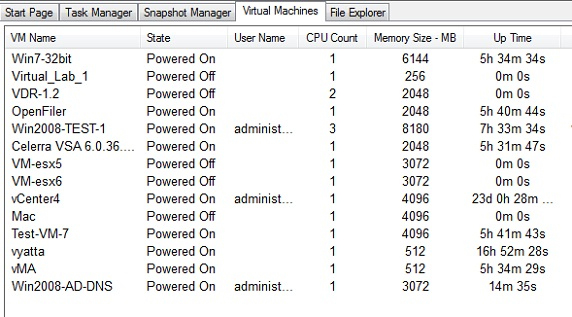How To Guy
3 Free Tools for Managing a VM's Lifecycle
Much like a human lifecycle, each virtual machine goes through one that needs to be managed from birth to end of life. Here are some tools to consider.
While most every virtualization admin already knows the type of things that can happen with a virtual machine, over a VM's lifespan few admins take the time to think about, plan, and document the virtual machine lifecycle. We create plenty of VMs, we use them, and (most of us) eventually remove them. But there's more to it than that.
Just like the life of a human lifecycle, the most basic lifecycle of a virtual machine is creation, use, and removal. Let's explore all the possible states of a virtual machine. Here's my list (you can add to it):
- Create a VM
- Install an OS in the VM
- Install VMware tools or MS integration services in the VM
- Create a template
- Snapshot an VM
- Update VM hardware
- Migrate the VM and/ or the VM's storage
- Analyze the VM's resource utilization
- "Right-size"/resize the VM's memory, memory, or disk
- Backup the VM
- Recovery the VM
- Zombied VMs
- Remove the VM
During its lifetime, a VM will likely go through all these states at one point or another. While the lifecycle of VMs will be primarily the same at most companies, you'll want to plan the lifecycle of virtual machines at your company (as it could be slightly different). Why plan it? A few reasons:
- To better understand what is possible with the virtual infrastructure
- To ensure that you know the state of all VMs
- To make sure that all VMs eventually go through some of the states (that they are all backed up or that they are all "right-sized" periodically)
Certainly you could go down your virtual machine inventory and click on every virtual machine to try to determine its state. This would be somewhat effective, as you could see if the VM tools are out of date or if it has snapshots. However, just by looking at a VM, you don't always know the last time it was backed up, if its resources are sized correctly, or if it's no longer used by its application owner. Surely there is a more automated way, right?
Well, VMware doesn't have a tool to do this anymore as the company discontinued vCenter Lifecycle Manager. There are certainly third-party tools that can help you with the performance and capacity "right-sizing" of VMs. There are also third-party tools that manage backup, recovery, and replication of VMs. Still, for general VM inventory status reporting you'll need some "go-to" methods for reporting on the status of your VMs in their lifecycle. Certainly, you can come up with methods and tools of your own, but here are some of the tools I turn to for reporting on VM lifecycle status:
vSphere Client VM Inventory Tab -- At the vCenter level of the hosts and VM inventory, will tell you many things about all VMs in your infrastructure. You can sort the columns, search the VMs, and add/remove columns in the view.
 |
Figure 1. vSphere Client VM Inventory Tab. (Click image to view larger version.) |
VMware Guest Console -- This free VMware fling is a Windows app that allows you to report on and control the files and processes inside your VMs.
 |
Figure 2. VMware Guest Console. (Click image to view larger version.) |
RVTools -- This free utility creates amazing spreadsheet-like reports on anything and everything in the virtual infrastructure.
 |
Figure 3. RVTools. (Click image to view larger version.) |
The most important thing to remember is that you don't want to forget about your virtual machines. For example, you don't want to never backup a VM. You don't want to never install VMware tools. You don't want to never review the resource utilization and allocation on a VM. You don't want to create a bunch of snapshots of a VM and then forget about them. If you have no budget for such tools, I hope these suggested -- and free -- tools will help you.
About the Author
David Davis is a well-known virtualization and cloud computing expert, author, speaker, and analyst. David’s library of popular video training courses can be found at Pluralsight.com. To contact David about his speaking schedule and his latest project, go to VirtualizationSoftware.com.